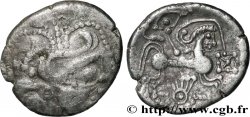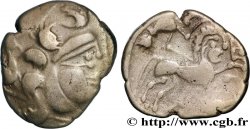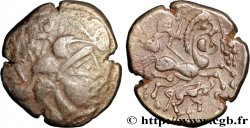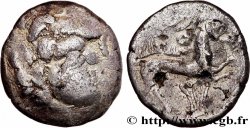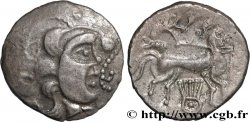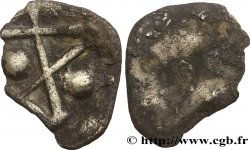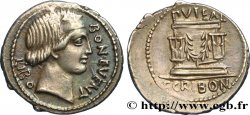Live auction - bga_868722 - GALLIA - BAÏOCASSES (Area of Bayeux) Statère d’argent au sanglier et à la lyre
得先注册又得到批准才可以报价。为了报价注册. 客户应该得到公司允许,那种过程需要 48 个小时。别等出售结束那一天才登记。您报价的话等于您赞成买那物品,而且按« 保价 » 证明您接受 cgb.fr 因特网拍卖使用法.
报价时只可以出全数值欧元总额。物品描述也说明销售结束时间,结束后出价都不会生效。 报价命令转达有时变动,等到最后秒钟增加否决的可能会。想多了解的话请注意 因特网拍卖常问
最高出价方将支付18%的不含税的拍卖费用
最高出价方将支付18%的不含税的拍卖费用
| 估算 : | 1 500 € |
| 价格 : | 800 € |
| 最高出价 : | 2 222 € |
| 拍卖结束日期 : | 05 December 2023 15:04:10 |
| 竞拍人 : | 1 竞拍人 |
种类 Statère d’argent au sanglier et à la lyre
日期: IIe - Ier siècle AC.
铸币厂名称/城市 Bayeux (14)
材质 billon
直径 21 mm
模子方针 12 h.
重量 7,06 g.
稀少度 R3
关于品相的说明
Jolie monnaie sur un flan centré. Au droit, une faiblesse de frappe à dix heures. De beaux détails. Patine grise
出版目录中的项代码 :
正面
正面的文字 ANÉPIGRAPHE.
正面的说明书 Tête humaine à droite, les cheveux en grosses mèches ; un sanglier dans la chevelure ; cordon perlé enroulé devant le visage.
背面
背面的文字 ANÉPIGRAPHE.
背面的说明书 Cheval androcéphale galopant à droite ; une lyre entre les jambes ; restes de l'aurige au-dessus du dos ; vexillum devant la tête.
评论
Ce statère s’intègre dans le monnayage tardif de la Basse Normandie, du Cotentin et de Jersey, sans pour autant correspondre exactement à aucune des monnaies publiées !
Le type à la lyre est traditionnellement plutôt attribué aux Abrincatui, mais le style ne leur correspond pas. Comme pour le statère aux deux lyres, n° 662 de MONNAIES 53, ne serait-il pas possible que ce statère soit un "mélange" de Baïocasses et d'Abrincatui, deux peuples mitoyens ?.
This stater is part of the late coinage of Lower Normandy, Cotentin and Jersey, without corresponding exactly to any of the published coins! The type with the lyre is traditionally attributed to the Abricatui, but the style does not correspond to them. As for the stater with two lyres, no. 662 of MONNAIES 53, would it not be possible that this stater is a “mixture” of Bayocasses and Abrincatui, two adjoining peoples?
Le type à la lyre est traditionnellement plutôt attribué aux Abrincatui, mais le style ne leur correspond pas. Comme pour le statère aux deux lyres, n° 662 de MONNAIES 53, ne serait-il pas possible que ce statère soit un "mélange" de Baïocasses et d'Abrincatui, deux peuples mitoyens ?.
This stater is part of the late coinage of Lower Normandy, Cotentin and Jersey, without corresponding exactly to any of the published coins! The type with the lyre is traditionally attributed to the Abricatui, but the style does not correspond to them. As for the stater with two lyres, no. 662 of MONNAIES 53, would it not be possible that this stater is a “mixture” of Bayocasses and Abrincatui, two adjoining peoples?








 对产品描述纠错
对产品描述纠错 打印
打印 分享我的选择
分享我的选择 提问
提问 Consign / sell
Consign / sell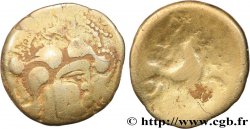
 产品介绍
产品介绍